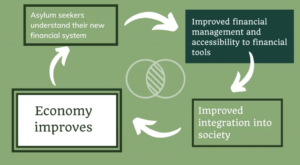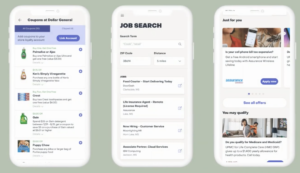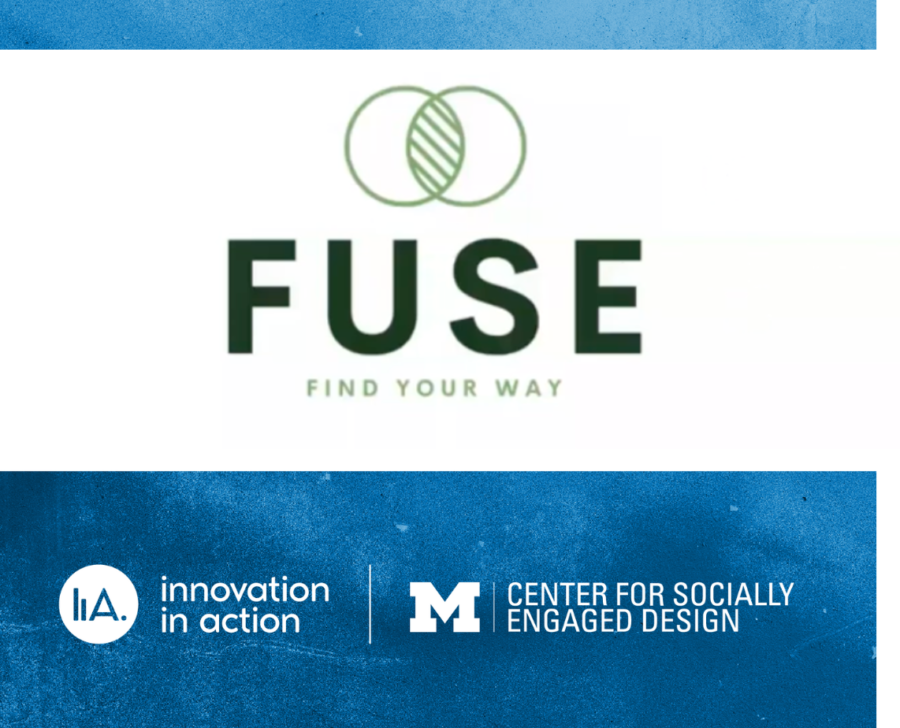FUSE: Providing a Financial Orientation to Refugees
Story by Sydney Moore
A Day in the Life of a Refugee
Imagine you are one of the 300,000 asylum seekers accepted to the United States last year. You are grateful to be here, but you are also overwhelmed. You don’t speak English very well and you can’t get a job until your refugee status is approved, which usually takes months. Until then, you are ineligible for almost any type of financial assistance.
In 2021 there were over 1.1 million asylum seekers awaiting adjudication of their claims in the United States alone. Through conducting interviews, we learned about the unmet needs of this population. Ryan, a refugee officer, stressed the importance of connecting refugees with living wage job opportunities. Similarly, Sarah G., an education advisor at the Rohingya Project, highlighted the importance of overcoming the language barrier when providing educational material on finances. We also talked to refugees, who stated that the period while waiting for their status to be approved was incredibly stressful.

How providing financial orientation to refugees will improve society
How Our Public Policy Backgrounds Contributed to FUSE
Our team is composed of Christian Neubacher, Margo Steinhaus, and Pisacha Wichianchan. We met last fall while completing a FinTech Entrepreneurship course in which every student had to create their own FinTech pitch. As Public Policy students, we are committed to improving the economic mobility of vulnerable populations. After learning about a mobile platform that allowed SNAP beneficiaries manage their cash assistance, Margo came up with the idea of creating an app that would allow refugees to manage their government-administered financial assistance. And while refugees have access to technical resources like English language training and cultural training, they do not receive any financial orientation. Like SNAP beneficiaries, asylum seekers and refugees desperately need a modernized process – FUSE could be that electronic, modern system, in any language refugees speak.
After Margo presented her idea, Christian and Pisacha joined forces with her, making it a group project. FUSE did well during our Ford School course, with blessings from our FinTech venture capital professor. When we saw the email about Innovation in Action (IiA), it was a no-brainer for us to apply, as we all felt like we could continue working on FUSE. As we went through the IiA process, we honed FUSE even more. Unfortunately, asylum seekers don’t have access to refugee cash assistance until they achieve refugee status, which can take months, if not years. Refugee status provides asylum seekers with a temporary social security number, without which asylum seekers can’t open a bank account or, therefore, get a job that isn’t cash-based. Without some sort of digital income in the US in 2022, life is pretty impossible. Our next goal became to work with local banks and credit unions in near areas with higher refugee populations to ensure a bank account and credit lines were possible for vulnerable asylum seeker populations when they move to the US.
We ended up receiving the Audience Choice Award during the final IiA presentation. IiA allowed us to refine our ideas, but it definitely helped that we had already been working on FUSE for an entire semester. On top of that, because our professor was a venture capitalist, he gave us great feedback on how to make our product more viable. For instance, he suggested that we make it monetarily incentivized so that we would be making money and not just giving our idea to the federal government. At this time, we are still working on finding partnering banks that will allow refugees to open bank accounts without social security numbers.
Overall, IiA really challenged us to think differently about communicating our message. We’ve learned that this is a key skill in any venture. In particular, we were all taken aback by the feedback from the practice rounds of IiA because it revealed so many minute details that called for improvement of which we hadn’t previously thought of. We also realized we were too focused on policy terms, but this doesn’t necessarily represent engaged design. Using jargon and policy acronyms can confuse your audience if they aren’t privy to them, making the product inaccessible.
Next Steps
We are currently working on designing and piloting an app that will allow people to view their cash benefit balances and bank accounts, complete free financial literacy training, see government assistance notifications, and find tailored coupons and discounts.

A prototyped version of the app. From left to right: an example of a coupons page, the job search function, and personalized notifications
Going forward, we are still interviewing potential partners, like the director of Freedom House Detroit. We are also planning a free pilot in the Detroit Metro Area. On a global scale, we hope to expand to other countries that host refugees after implementing FUSE domestically. If you are interested, follow along with our journey by watching our final IiA presentation or checking out our linkedin profiles: Christian Neubacher and Margo Steinhaus.



